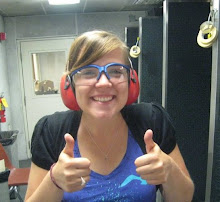I have to say that this last week was probably the most beneficial to me because we often worked with the lesson to learn it. I am definitely a learner who does better by putting it into practice. The AAAWWUBBIS lesson was something I never really thought about before. These are lessons you may know internally without really thinking about the actual rules. It made your realize how those subordinate clauses need a period after them and how AAAWWUBBIS makes that first half only a clause and it is no longer a complete sentence. I really enjoyed the lesson and I love keeping the workshop checklist written in a certain place so that one day I may use the lessons from it in my own classroom.
I was so thankful when the deadline was pushed back for the scrapbook because I often found sentences or commas I thought were incorrect but sometimes it would turn out that they weren’t really incorrect but rather it was a newspaper related preference. I am still really frustrated with finding examples because I suppose I do not have very much confidence that it is actually incorrect. I think looking at the example scrapbooks and asking questions really helped in class on Wednesday. I do have more ideas of what to look for now, but I still worry whether I am judging the mistake correctly. Overall, I really enjoyed class this week because I learned a lot about applying the lessons to my own writing and finding examples and common mistakes in others writing.
Question: How do you recognize an introductory clause? What rules do you have for identifying them?
Subscribe to:
Post Comments (Atom)

Most often if I were to identify an introductory clause, it would be through two factors. One is whether or not there is a comma following it. However, I think the most telling way to recognize an introductory clause is through looking at the words used in the beginning of the sentence themselves. I can't wrap my brain around a technical definition for introductory language, but that may be because there are so many words and phrases: however, yet, still, with that being said, furthermore, therefore... the list could continue. Aside from actually defining the structure of an introductory clause, I think that those two things, commas and word choice, are the telltale signs to look for.
ReplyDelete